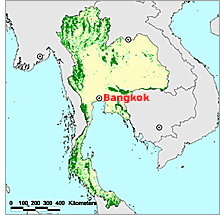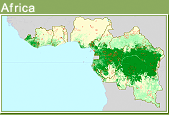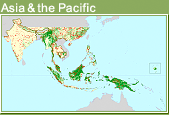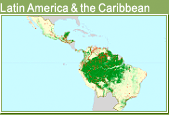Country details
Status of Tropical Forest Management 2005
Asia & the Pacific
Thailand

©UNEP-WCMC 2004
Forestry in Thailand is constrained by several factors. Coincident with Thailand's rapid economic growth in the 1980s and 1990s, its forest resources became severely depleted. Logging in natural forests has been banned, but the forests remain under pressure from encroachment, illegal logging, fire and other agents. The Royal Forest Department, the government agency responsible for forests, has a long history of forest management and remains reasonably well resourced. Plantations, especially of rubberwood, and imports are now supplying the country's thriving downstream-processing timber industry. The huge importance of tourism to the Thai economy provides an excellent incentive for strong measures to improve forest protection.
Key points
- The PFE is estimated to be 10.1 million hectares, of which 1.87 million is production PFE (all plantations) and 8.26 million protection PFE.
- An estimated 50% of the reported PFE in 1991 has been converted to agriculture, settlements and other uses.
- A logging ban has been in place in natural forests since 1989, after disastrous flash floods; however, it has not been sufficient to stop forest loss and degradation.
- Illegal tree-cutting in natural forests remains a problem.
- At least 522,000 hectares of protection PFE are being managed sustainably, but generally little information is available on the status of management in forested protected areas.
- Forests are owned by the state. There is an ongoing debate in Thailand about the rights of traditional and local communities to use and manage forests, including in protected areas.
- A draft Community Forestry bill has been under development and debate in Thailand for more than a decade.
- Timber production in Thailand has shifted from natural forests to planted forests, particularly teak and rubberwood, and non-forest sources of wood, supplemented by imports.

 Africa
Africa  Asia & the Pacific
Asia & the Pacific  Latin America & the Caribbean
Latin America & the Caribbean